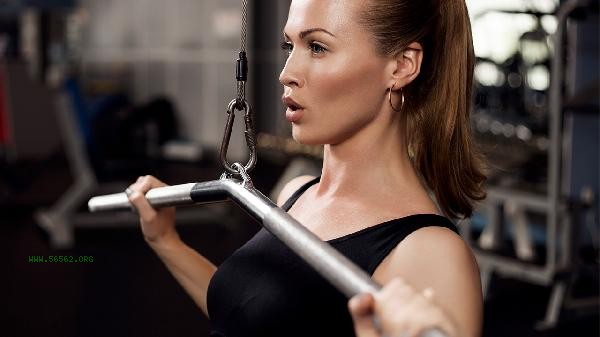Effective exercises for training chest muscles include flat press, upward oblique press, double bar arm flexion and extension, dumbbell flying bird, and instrument chest clamping. These movements can provide comprehensive stimulation for the pectoralis major and pectoralis minor muscles, suitable for fitness enthusiasts at different stages of training.

1. As a basic compound action, the flatbed press can simultaneously activate the middle part of the pectoralis major muscle, the anterior deltoid muscle bundle, and the triceps brachii muscle. When using barbells or dumbbells for training, it is necessary to keep the scapula downward, naturally arch the waist, lower it near the nipple, and then push it vertically. Pay attention to controlling the speed of the centrifugal stage to avoid excessive forward extension of the shoulder joint. This action is suitable as a training opening, using a large weight to stimulate muscle growth.
2. Upward inclined bench press
Adjust the training bench to a 30-45 degree tilt, focusing on strengthening the upper fibers of the pectoralis major muscle. Using a grip distance slightly narrower than shoulder width, the barbell is lowered to the collarbone position. Excessive upward tilt angle may lead to shoulder compensation, and it is recommended to combine with alternating flat bench press training. The dumbbell version can provide a larger range of motion, which helps improve the imbalance of left and right muscle strength.
3. Double bar arm flexion and extension
is the golden movement in weight training, which adjusts the stimulation area by leaning forward. Maintain a 45 degree outward extension of the elbow, and when sinking to the ground parallel to the upper arm, there is a noticeable stretching sensation in the chest muscles. Advanced players can use weight training, while those who have stepped down can use elastic bands for assistance. This action can synchronously develop the strength of the lower edge of the pectoral muscle and the triceps muscle, and improve the outer line of the pectoral muscle.
4. Dumbbell Flying Bird

A classic exercise for isolated training of chest muscles, using a supine position to maintain a slight flexion of the elbow, and extending both arms along an arc until the chest muscles are fully extended. Choose controllable weight to avoid shoulder joint damage, and imagine embracing a big tree during peak contraction. The chest muscles can be stimulated comprehensively from three angles: flat, upward sloping, and downward sloping. Pay attention to maintaining shoulder stability and avoiding shoulder shrugging compensation.
5. Chest clamp
Fixed instruments provide a stable movement trajectory, suitable for beginners to master the power mode. Adjust the seat so that the handle is level with the chest line, maintain a 100-120 degree angle between the elbows, and complete the movement by squeezing the chest muscles. Equipment training can accurately control centrifugal contraction and can be used as a finishing action for training. The butterfly machine variant can strengthen the middle or outer chest muscles separately, and achieve multi angle stimulation with different grips.
It is recommended to schedule 2-3 chest muscle exercises per week, selecting 3-4 movements each time, with 8-12 repetitions per group to complete 3-4 sets. Warm up the shoulder joints thoroughly before training, and control the rest between groups within 60 seconds. During the muscle building phase, the frequency of weight loss can be appropriately increased, while during the shaping phase, attention should be paid to movement control and muscle sensation. Combined with protein supplementation and sufficient sleep, significant improvement in chest muscle contour can usually be observed within 8-12 weeks. Be careful to avoid training the same muscle group for two consecutive days to prevent the risk of muscle dissolution caused by overtraining.









Comments (0)
Leave a Comment
No comments yet
Be the first to share your thoughts!